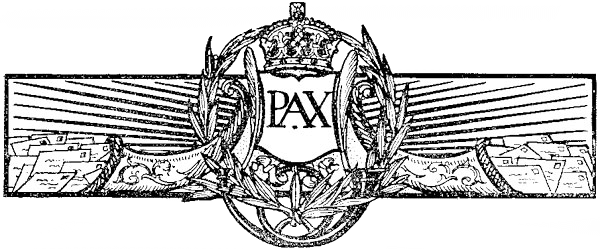Roman Provincias > Moesia Superior
Moesia Superior

Background
Moesia Superior was a Roman province located in the southeastern part of the Balkan Peninsula, corresponding roughly to modern-day Serbia, northern Bulgaria, and parts of Romania. Here's an overview of Moesia Superior:
Conquest and Formation:
Moesia Superior was established as a Roman province in the early 2nd century CE, during the reign of Emperor Trajan. It was formed as part of Trajan's conquest of the Dacian Kingdom and subsequent reorganization of the Danubian frontier. The province was created by dividing the larger province of Moesia into two parts: Moesia Superior (Upper Moesia) and Moesia Inferior (Lower Moesia). Moesia Superior was situated to the west of the river Drinus (modern-day Drina River).
Geography:
Moesia Superior was located in a strategic position along the Danube River, with its northern border formed by the river itself. It was characterized by a diverse landscape, including fertile river valleys, rolling hills, and mountainous terrain. The province benefited from its proximity to the Danube, which served as a natural barrier and transportation route, facilitating trade and communication with other provinces of the Roman Empire.
Urban Centers and Infrastructure:
Singidunum (modern-day Belgrade) served as the capital and largest city of Moesia Superior. It was an important commercial, military, and administrative center, boasting Roman monuments such as temples, forums, and amphitheaters. Other significant cities in the province included Viminacium (modern-day Kostolac), Sirmium (modern-day Sremska Mitrovica), and Naissus (modern-day Niš). These cities were connected by a network of roads, bridges, and fortifications constructed by the Romans to facilitate transportation and defense.
Economy and Resources:
Moesia Superior was an agriculturally productive region, known for its fertile soil and favorable climate. The province produced a variety of crops, including grains, grapes, olives, and vegetables, which were cultivated in the river valleys and plains. Trade along the Danube River and with neighboring provinces contributed to the province's economy. Moesia Superior also had valuable mineral resources, including gold, silver, iron, and copper, which were mined and exploited for export to other parts of the Roman Empire.
Culture and Society:
The population of Moesia Superior was ethnically diverse, consisting of Roman settlers, indigenous Thracians, Illyrians, Dacians, and other ethnic groups. Latin was the administrative language of the province, although indigenous languages may have also been spoken. Romanization had a significant impact on the culture and society of Moesia Superior, with Roman customs, laws, and institutions gradually replacing indigenous traditions. Roman religious beliefs and practices coexisted with local cults and deities, and temples dedicated to Roman gods and goddesses were erected throughout the province.
Legacy and Decline:
Moesia Superior remained under Roman rule until the decline of the Western Roman Empire in the 5th century CE. Following the Roman period, the region was ruled by various powers, including the Byzantine Empire, the Kingdom of Serbia, and later medieval and modern Serbia, Bulgaria, and Romania. The legacy of Roman Moesia Superior endures in its archaeological sites, monuments, and cultural heritage, which provide valuable insights into the history of the region and its interactions with the broader Roman Empire and ancient Mediterranean world.
Roman Provincias
Roman Provincias List
- Provincia Achaea
- Provincia Aegypti
- Provincia Africa Proconsularis
- Provincia Cottiae
- Provincia Maritimae
- Provincia Alpes Poeninae
- Provincia Arabia Petraea
- Provincia Armenia
- Provincia Asia
- Provincia Assyria
- Provincia Augustamnica
- Provincia Bithynia et Pontus
- Provincia Britannia Inferior
- Provincia Britannia Superior
- Provincia Britannia
- Provincia Byzacena
- Provincia Cappadocia
- Provincia Cilicia
- Provincia Corsica et Sardinia
- Provincia Crete et Cyrenaica
- Provincia Cyprus
- Provincia Dacia Aureliana
- Provincia Dacia
- Provincia Dalmatia
- Provincia Galatia
- Provincia Gallia Aquitania
- Provincia Gallia Belgica
- Provincia Gallia Lugdunensis
- Provincia Gallia Narbonensis
- Provincia Germania
- Provincia Germania Inferior
- Provincia Germania Superior
- Provincia Hispania
- Provincia Hispania Baetica
- Provincia Hispania Citerior
- Provincia Hispania Lusitania
- Provincia Hispania Tarraconensis
- Provincia Hispania Ulterior
- Provincia Iudaea
- Provincia Lycia et Pamphylia
- Provincia Macedoniae
- Provincia Mauretania
- Provincia Mauretania Caesariensis
- Provincia Mauretania Tingitana
- Provincia Mesopotamia
- Provincia Moesia
- Provincia Moesia Inferior
- Provincia Moesia Superior
- Provincia Pannonia
- Provincia Pannonia Inferior
- Provincia Pannonia Superior
- Provincia Pannonia Valeria
- Provincia Raetia
- Provincia Sicilia
- Provincia Sophene
- Provincia Syria
- Provincia Syria Palaestina
- Provincia Syria Phoenice
- Provincia Thracia